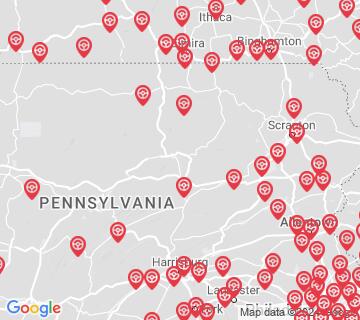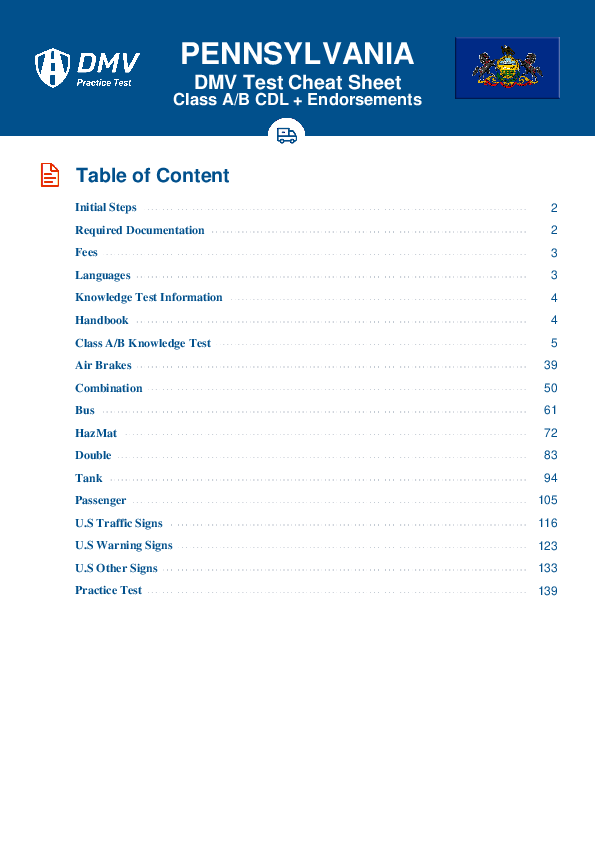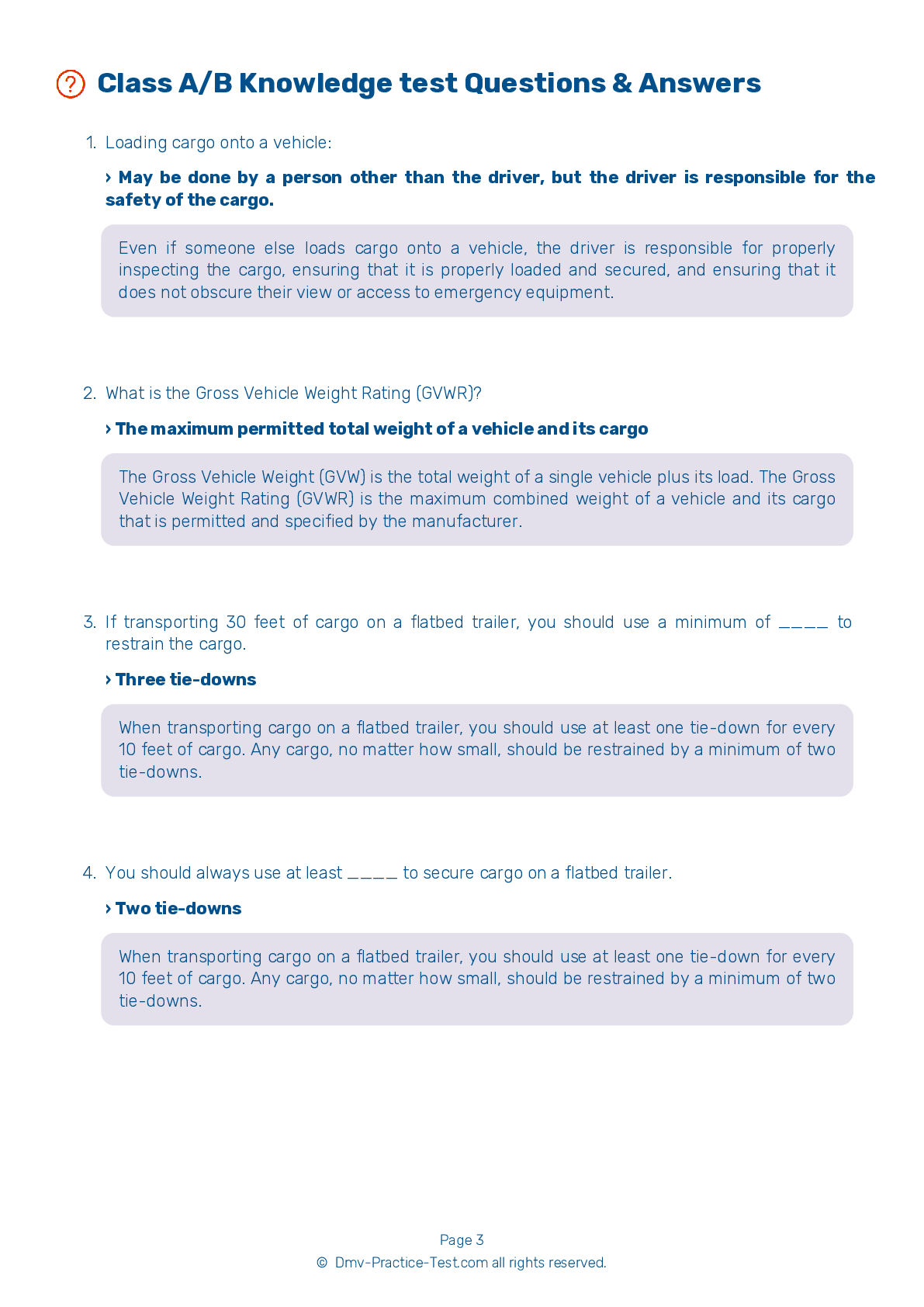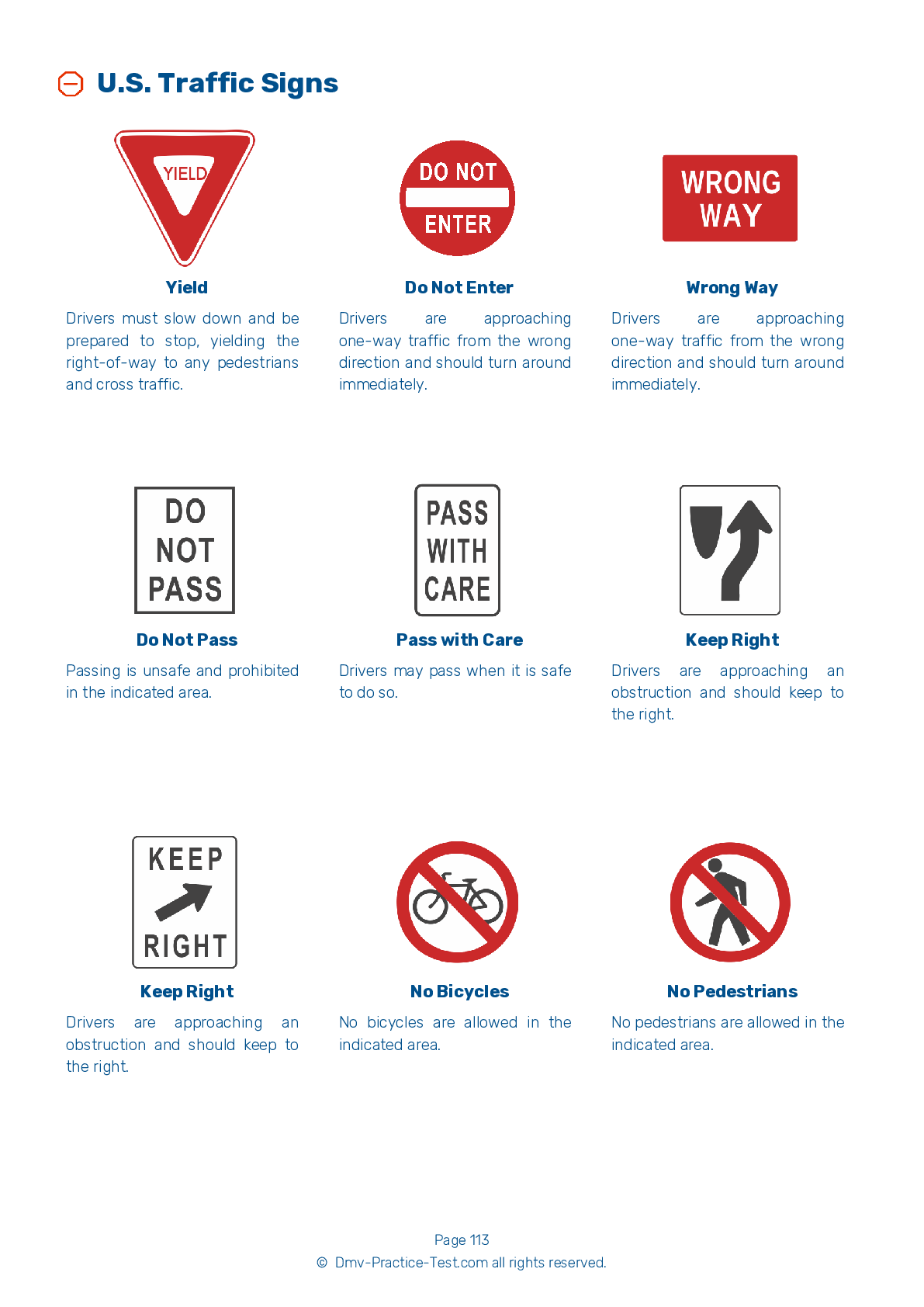Knowledge Test Class A #2
Class A Driving Test | Pennsylvania 2025 #2 Page 7 of 7
Train for FREE online with our Pennsylvania class A license test. The official exam test consists of several obligatory parts, with all of them checking your knowledge of different blocks of road rules. If you need to obtain a PA CDL class A permit in 2025, practice as much as possible. Free sample tests published on our website will help you check and improve your knowledge and boost your grades. Please bear in mind that CDL class A requirements may vary from state to state.
50
40
20
43 . During a walk-around inspection, ensure there are no cracks on the brake drums that are more than ____ of the width of the friction area.
One tenth
Before beginning a trip, it is important to check the brake drums during your walk-around inspection. It is unsafe to drive if any brake drum has a crack more than one half of the width of the friction area.
44 . During the basic vehicle control skills test:
Excessive pull-ups are acceptable in the opinions of some test administrators.
During the basic vehicle control skills test, a pull-up will be scored any time an applicant stops and pulls forward to gain a better position. Stopping without changing direction will not. An excessive number of pull-ups will count as errors.
45 . If operating a school bus, you are considered to be driving under the influence of alcohol if you have a minimum blood alcohol content (BAC) of:
0.1 percent.
A person operating a school bus is considered to be driving under the influence of alcohol if their blood alcohol concentration (BAC) is 0.02 percent or higher.
46 . If an Anti-Lock Braking System (ABS) is equipped on a trailer but not on a tractor:
The tractor and trailer can still be used together.
A vehicle being equipped with anti-lock brakes on only the tractor or only the trailer provides additional control during braking.
47 . When inspecting engine compartment belts during the vehicle inspection test:
The applicant must identify which items are not belt-driven, if any.
When checking the engine compartment during the vehicle inspection test, you must check the power steering, water pump, alternator, and air compressor belts. In addition to cracks and frays, you should check the belts for snugness, allowing up to three-quarters of an inch of play at the center of each belt. If any of these items are not belt-driven, you must identify them and ensure that their components are operating properly, are not damaged or leaking, and are mounted securely.
48 . If a tire fails, the driver should:
Accelerate.
If a tire fails, braking could cause a loss of control. Unless braking is necessary to avoid a hazard, you should stay off the brakes until your vehicle has slowed considerably. Only then should you brake very gently, pull off the road, and stop.
49 . To correct a drive-wheel braking skid, a driver should do all of the following, except:
Accelerate.
To correct a drive-wheel braking skid, you should first remove your foot from the brake pedal to allow the locked wheels to begin rolling again. Quickly steer in the direction you want to go, then countersteer to prevent your vehicle from skidding in the opposite direction.
50 . When the brake pedal is pushed down, air brakes work:
Only if it is warm outside.
Because air takes time to flow through the air lines to the brakes, air brakes cannot begin working instantly. There is often a brake lag of at least one-half of a second between the moment the brake pedal is pressed and the moment the brakes begin to work.
Search the best driving school in your neighbourhood
2025 Pennsylvania | Frequently Asked Questions
In Pennsylvania, a Commercial Driver's License (CDL) Class A is defined as a license that allows the holder to operate any combination of vehicles with a Gross Combination Weight Rating (GCWR) of 26,001 pounds or more, provided the vehicle(s) being towed have a GVWR of more than 10,000 pounds. This includes tractor-trailers and truck and trailer combinations.
A Class A CDL license in Pennsylvania allows the holder to operate vehicles such as tractor-trailers, truck and trailer combinations, tank vehicles, livestock carriers, and flatbeds. This license is required for any combination of vehicles with a Gross Combination Weight Rating (GCWR) of 26,001 pounds or more if the towed vehicle is over 10,000 pounds.
To obtain a Class A CDL in Pennsylvania, you must be at least 18 years old (21 for interstate driving), possess a valid Pennsylvania driver's license, and pass a vision test. You'll also need to pass a general knowledge test and a skills test, which includes a pre-trip vehicle inspection, a basic controls test, and an on-road driving exam.
In Pennsylvania, you must be at least 18 years old to qualify for a Class A CDL license. However, you must be 21 years old or older if you plan to drive across state lines or carry hazardous materials. Please remember that additional requirements, like passing a medical examination and specific tests, also apply.
Endorsements are not required for a Class A CDL license, but they can enhance your driving privileges. Examples include H (Hazardous materials), T (Double/Triple trailers), P (Passenger vehicles), S (School buses), and N (Tank vehicles). Each endorsement requires passing a separate written knowledge test and, in some cases, a skills test.
The Class A CDL skills test in Pennsylvania is divided into three parts: a pre-trip vehicle inspection to check your understanding of your vehicle and its safety, a basic controls test to assess your ability to control the vehicle, and an on-road driving exam to evaluate your practical driving skills in various traffic situations.
Yes, Class A CDL license holders may face limitations based on their driving and medical record. For instance, restrictions can be imposed for lack of English language proficiency, inability to operate a manual transmission, or if the driver requires corrective lenses. Additionally, drivers must pass a physical exam every two years to maintain their license.
Yes, in Pennsylvania, the written Class A CDL test is offered in multiple languages besides English. However, federal regulations require that all CDL holders must be able to read and speak English sufficiently to converse with the general public, understand highway traffic signs and signals, respond to official inquiries, and make entries on reports and records.
Yes, accommodations can be made for the Class A CDL written test if you have a disability. You need to contact the Pennsylvania Department of Transportation (PennDOT) ahead of time to discuss your needs. Accommodations may include extended time, a separate testing room, or having the test read aloud. It's important to provide sufficient documentation of your disability.
Yes, if you don't pass the Class A CDL written test in Pennsylvania, you can retake it. However, you must wait at least seven days before retaking the test. It's important to review the areas you struggled with before attempting the test again. Keep in mind that additional fees may apply for each retest.




